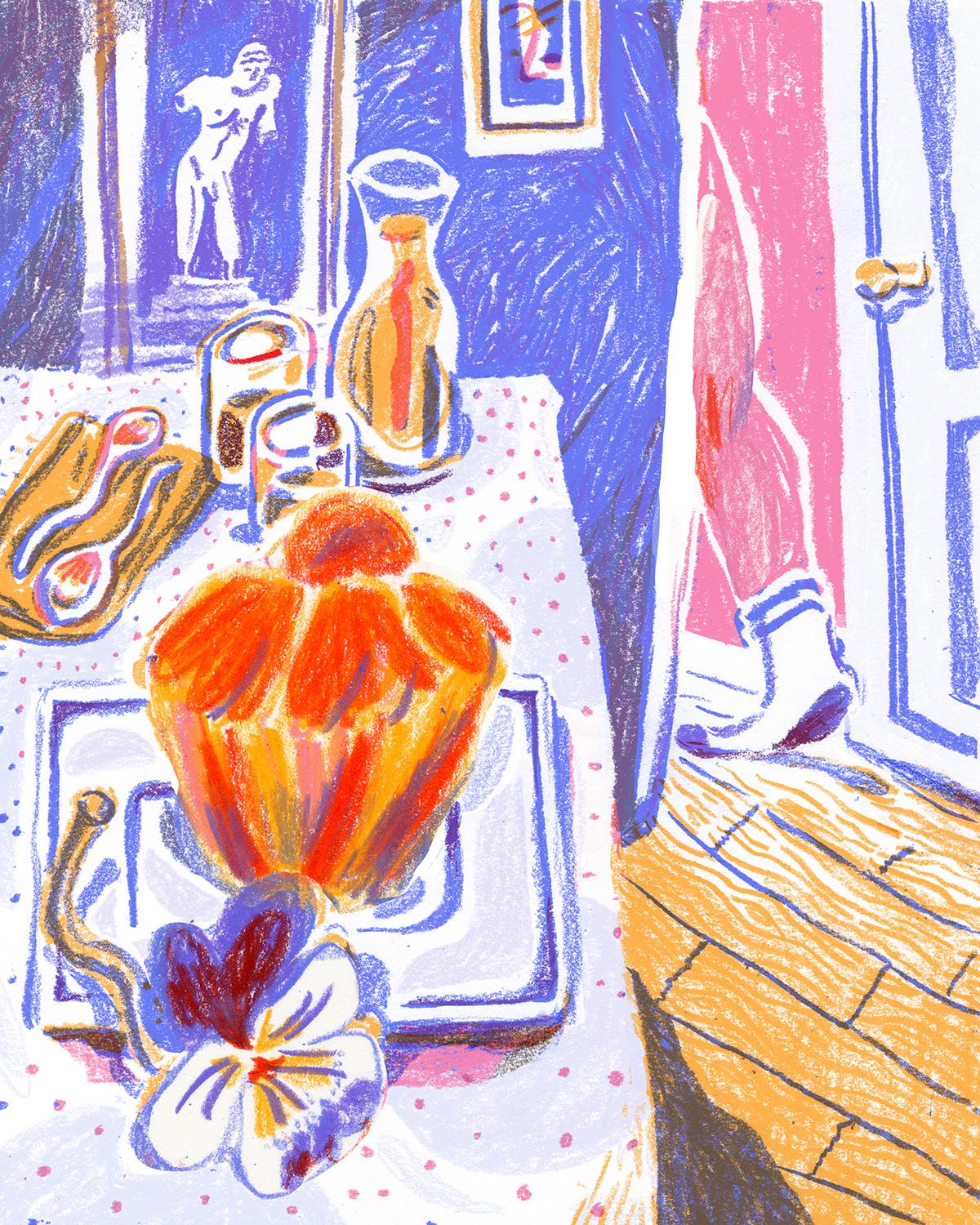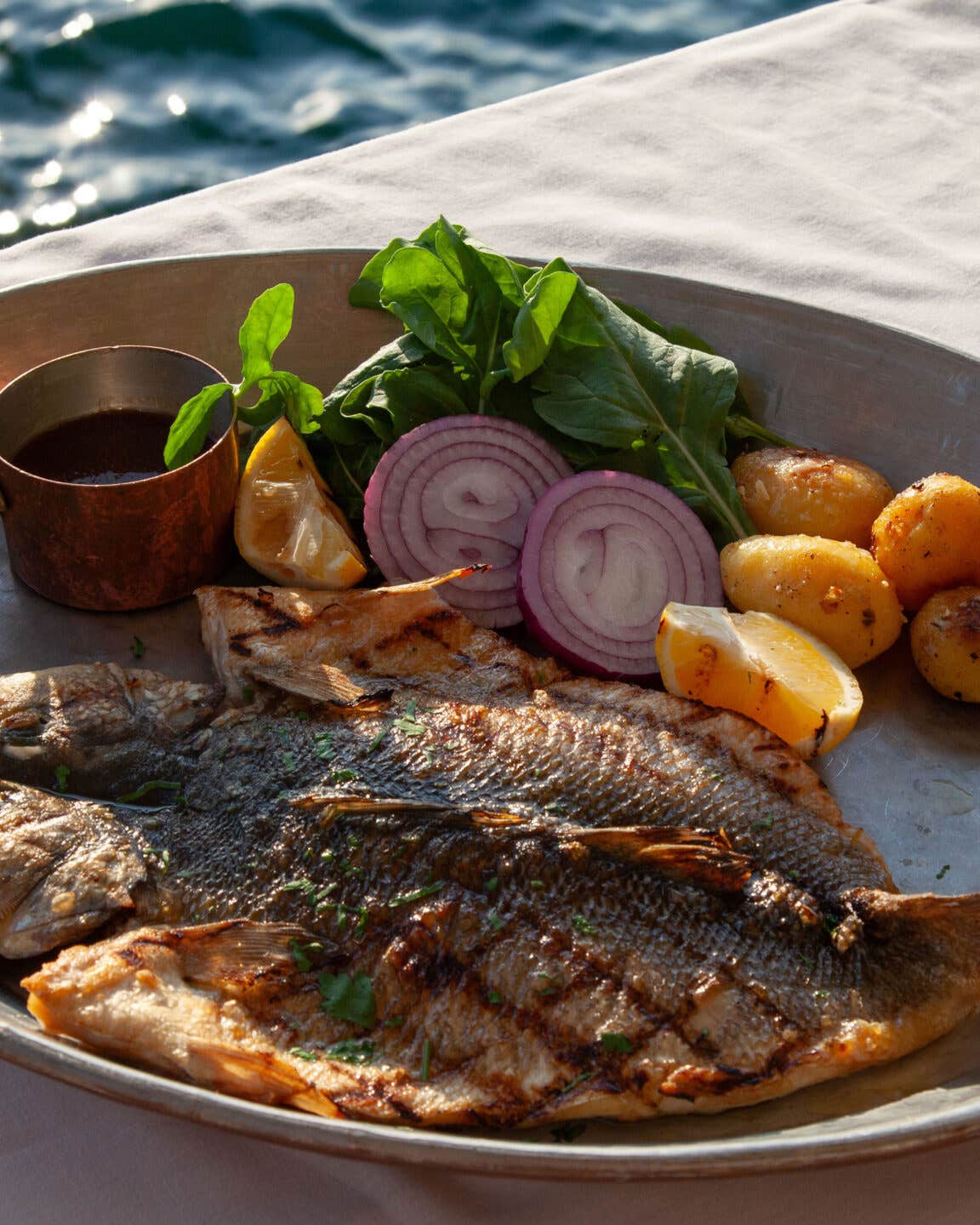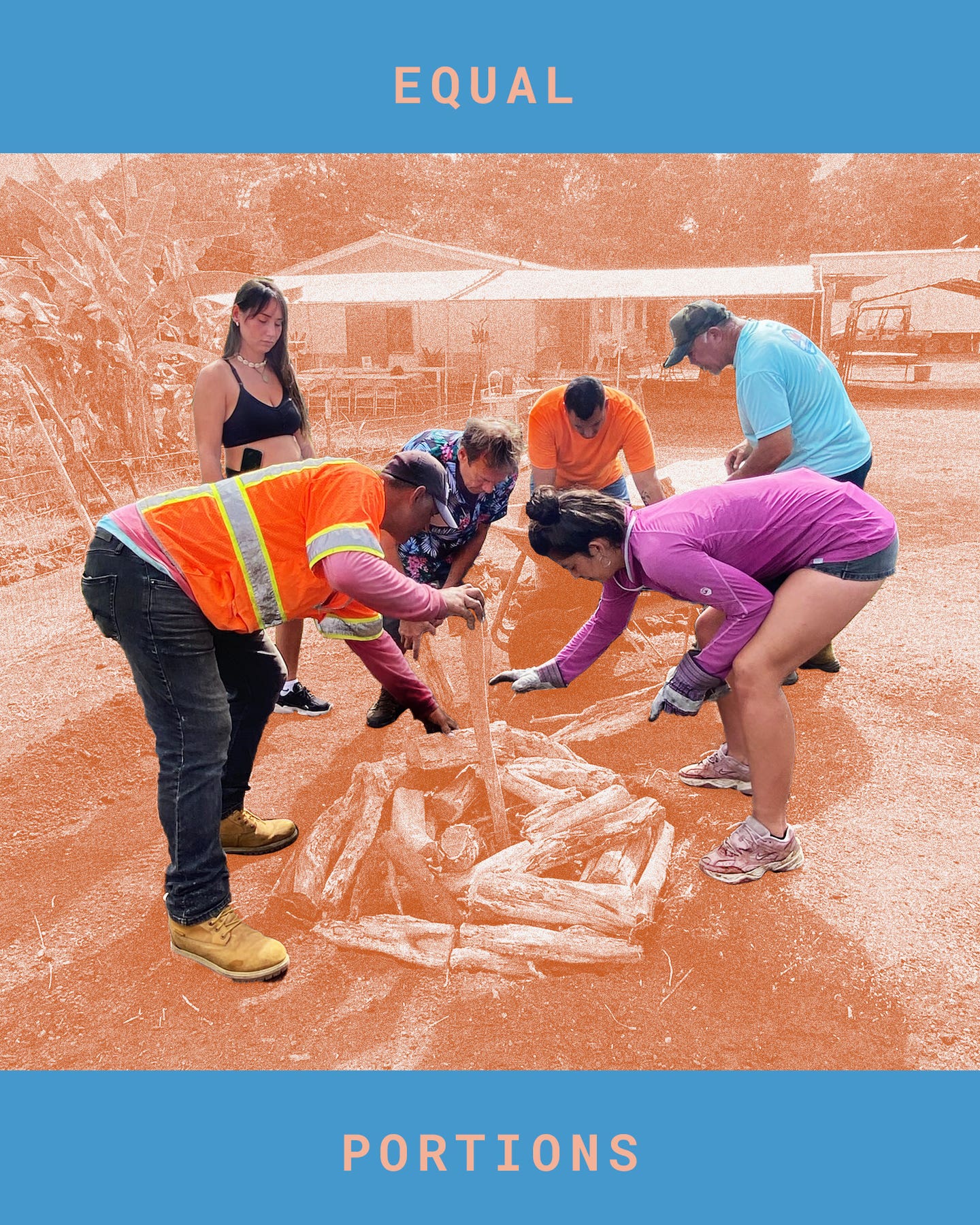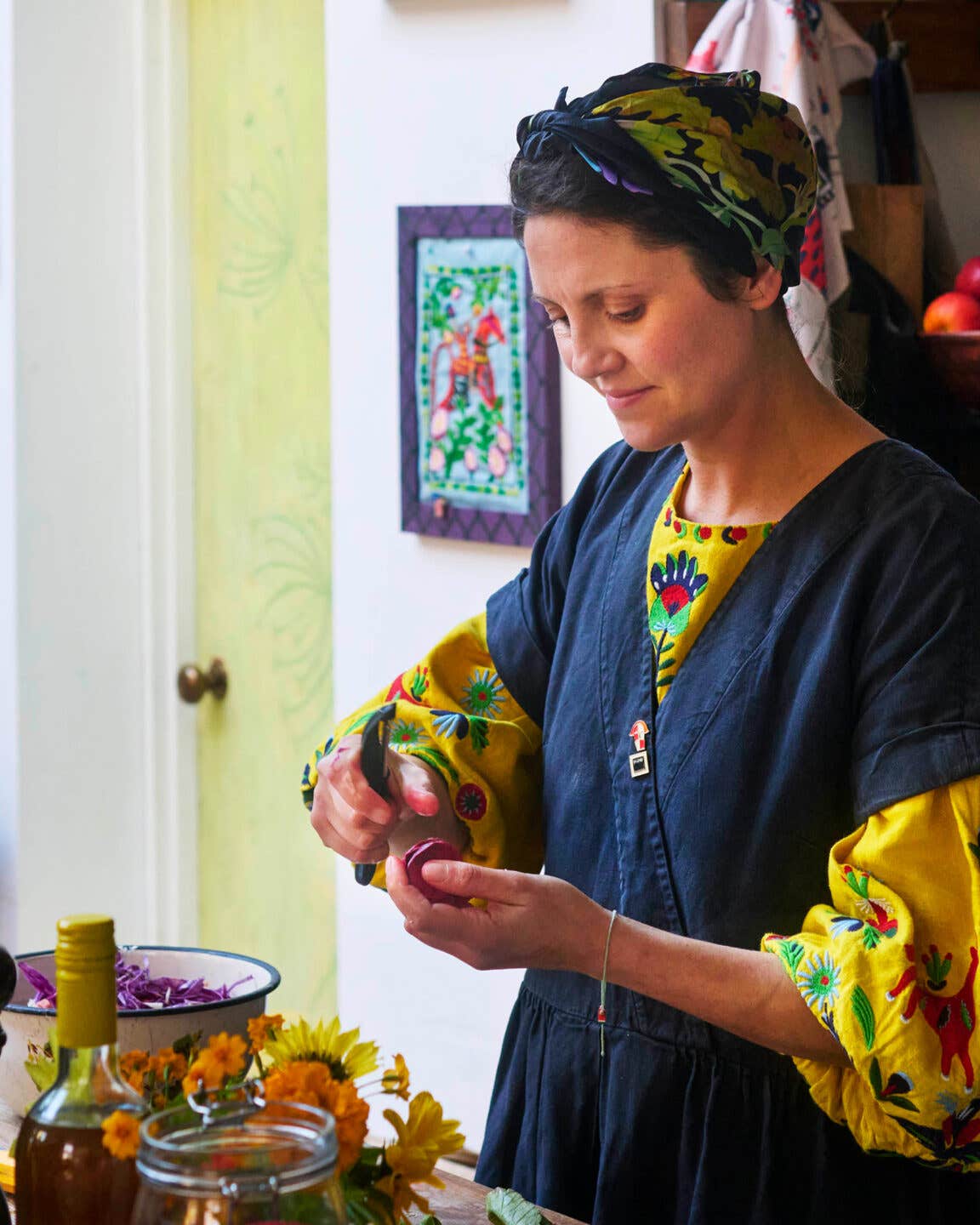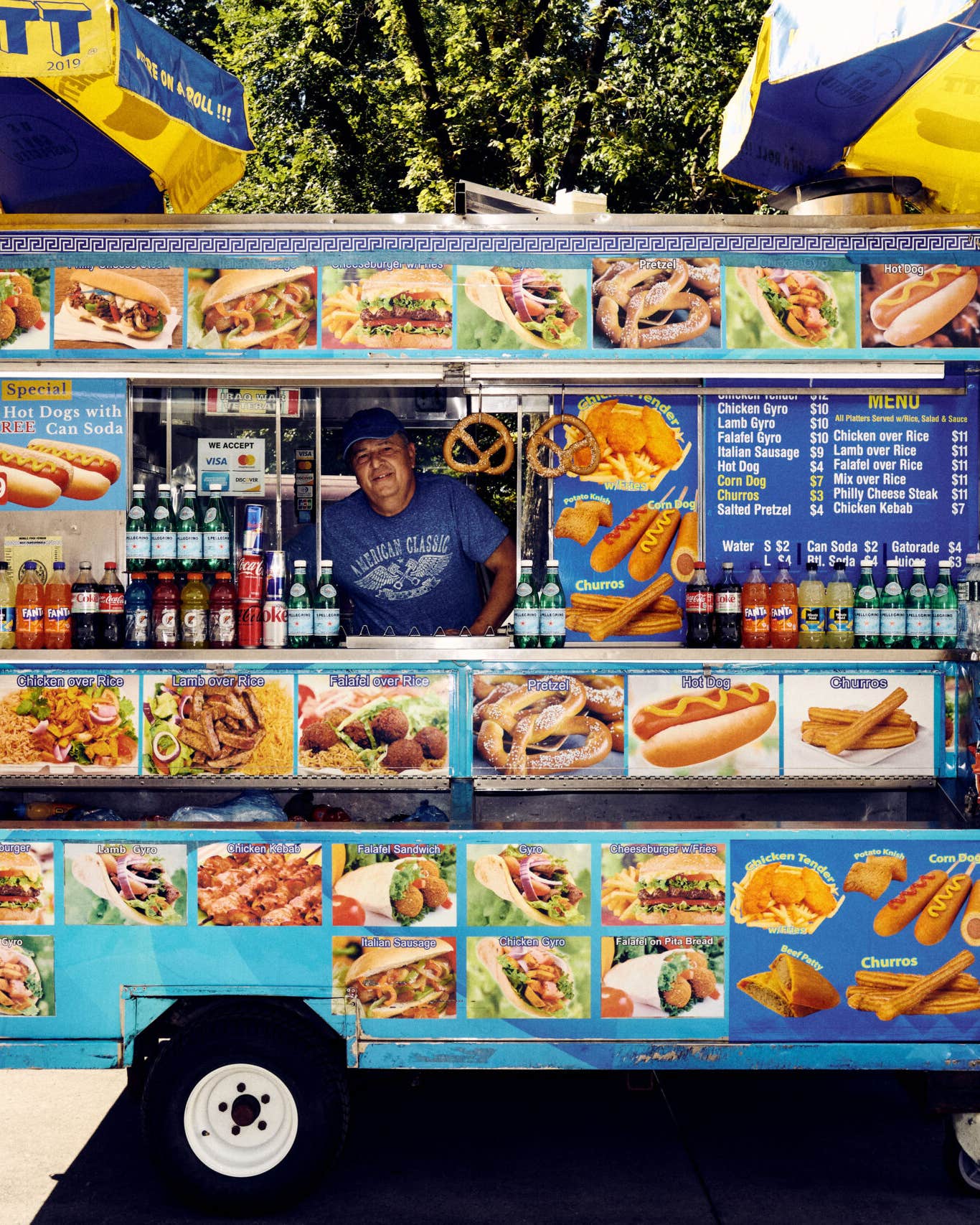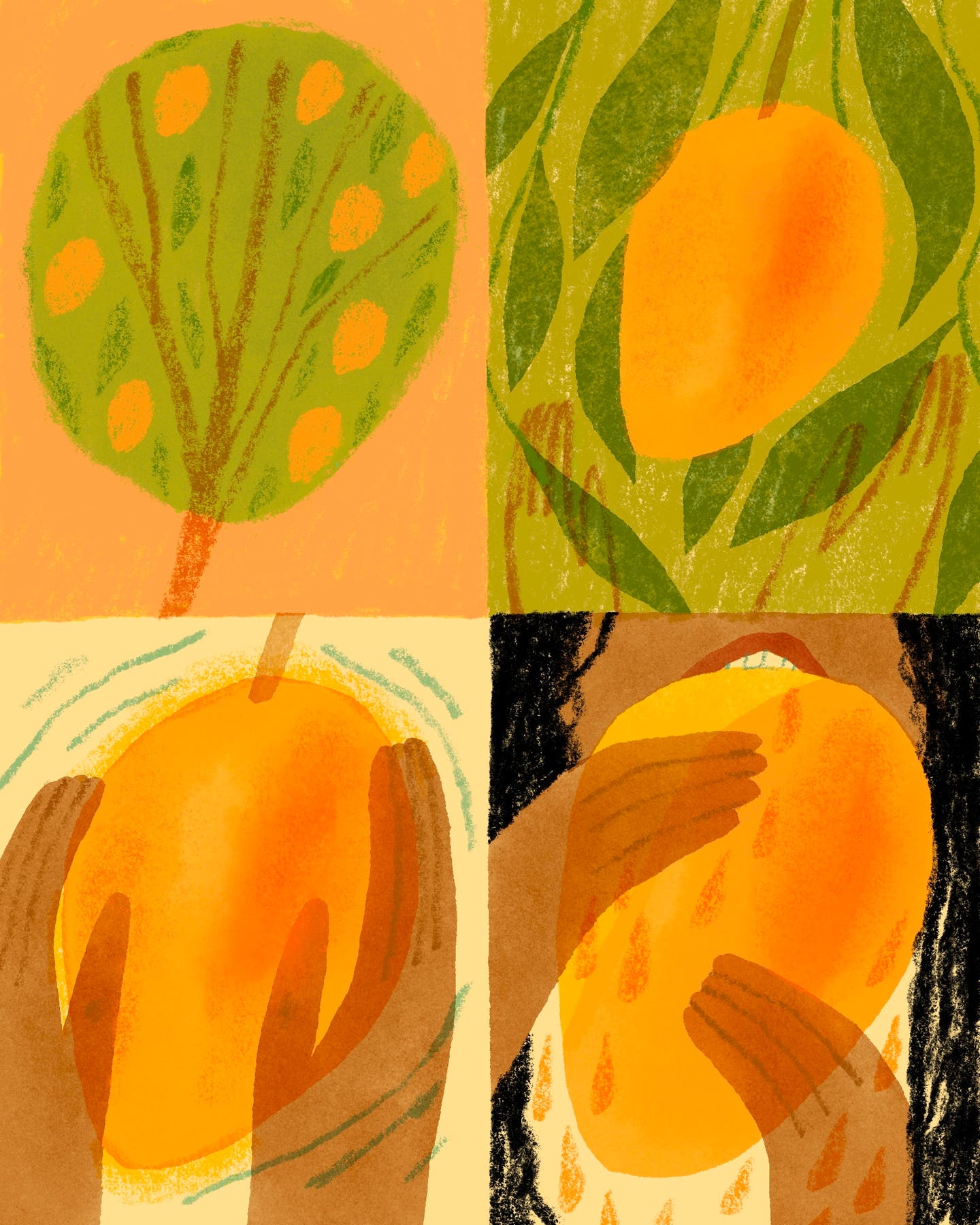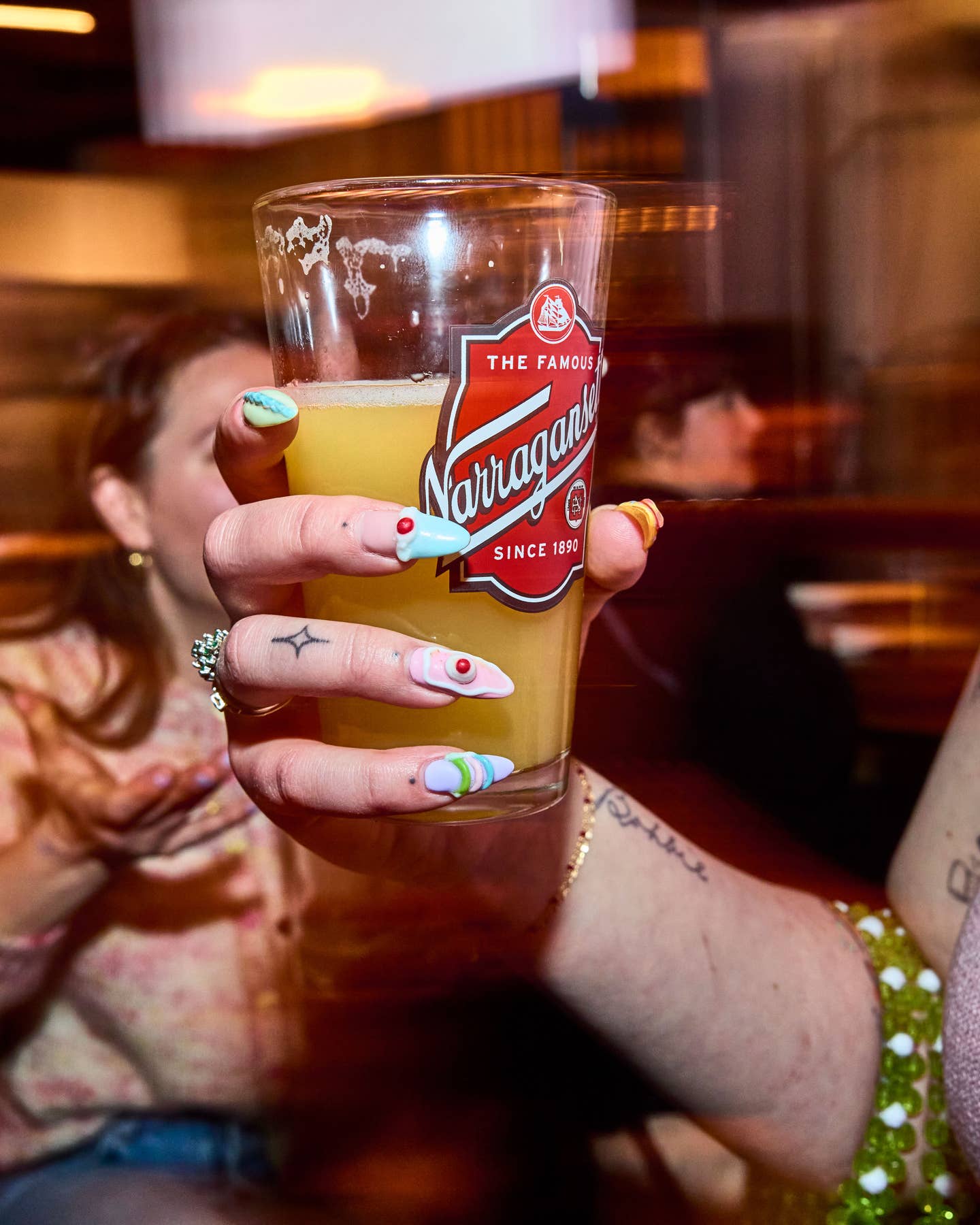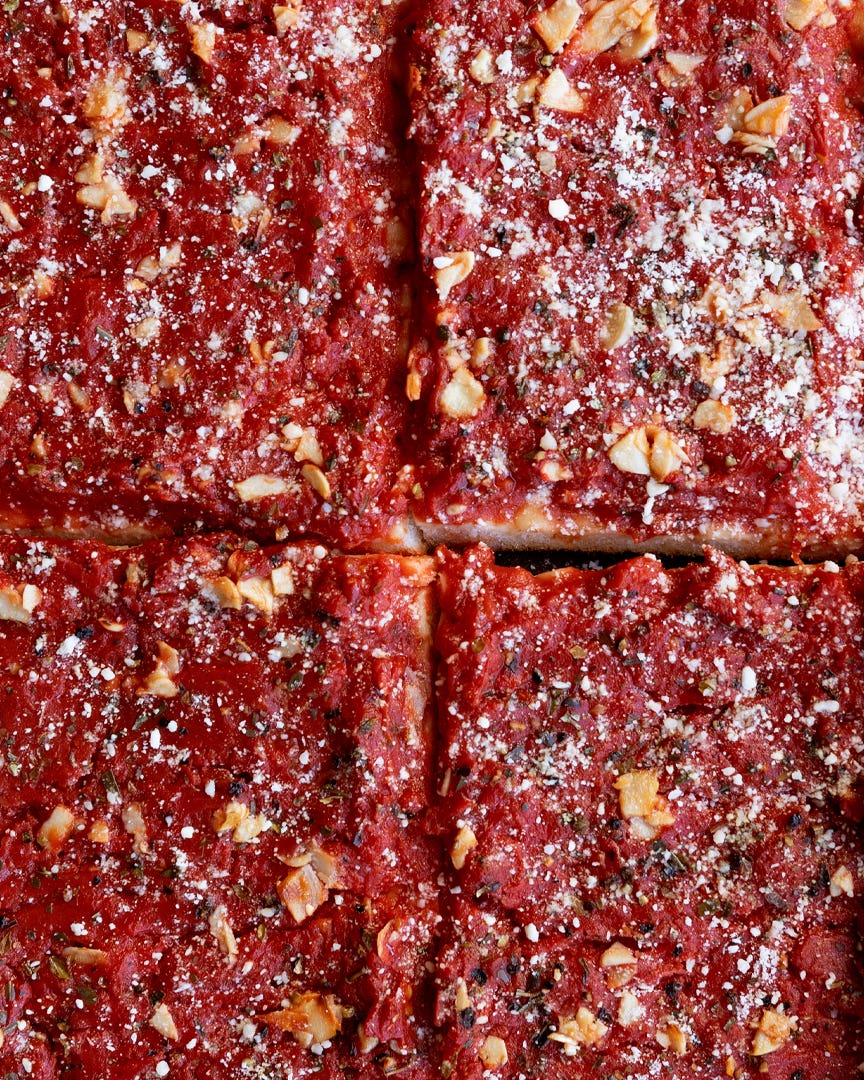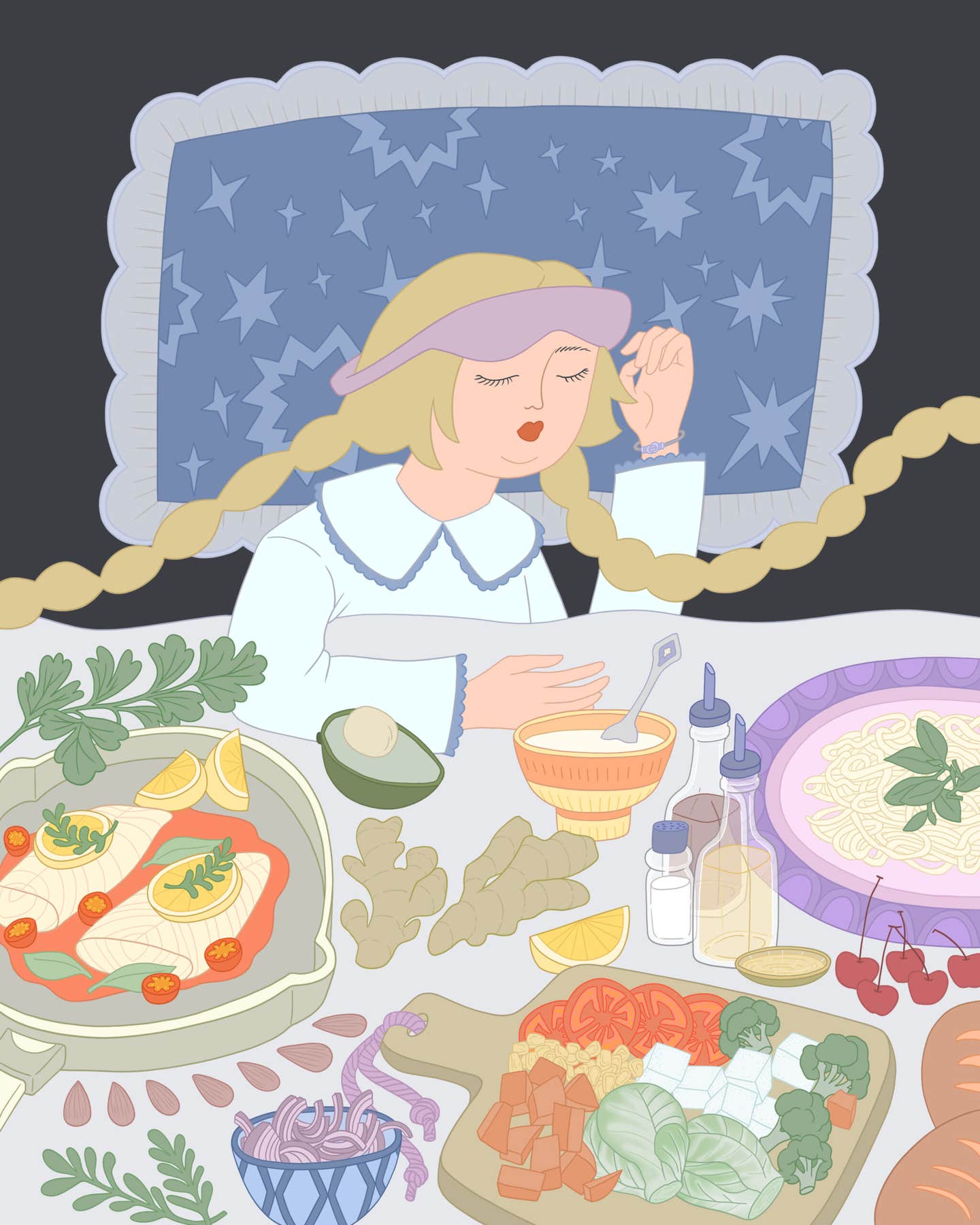The Problem with National Dishes
An interview with Anya von Bremzen about her new, feather-ruffling book has us questioning everything we thought we knew about pizza, mole, and ramen.
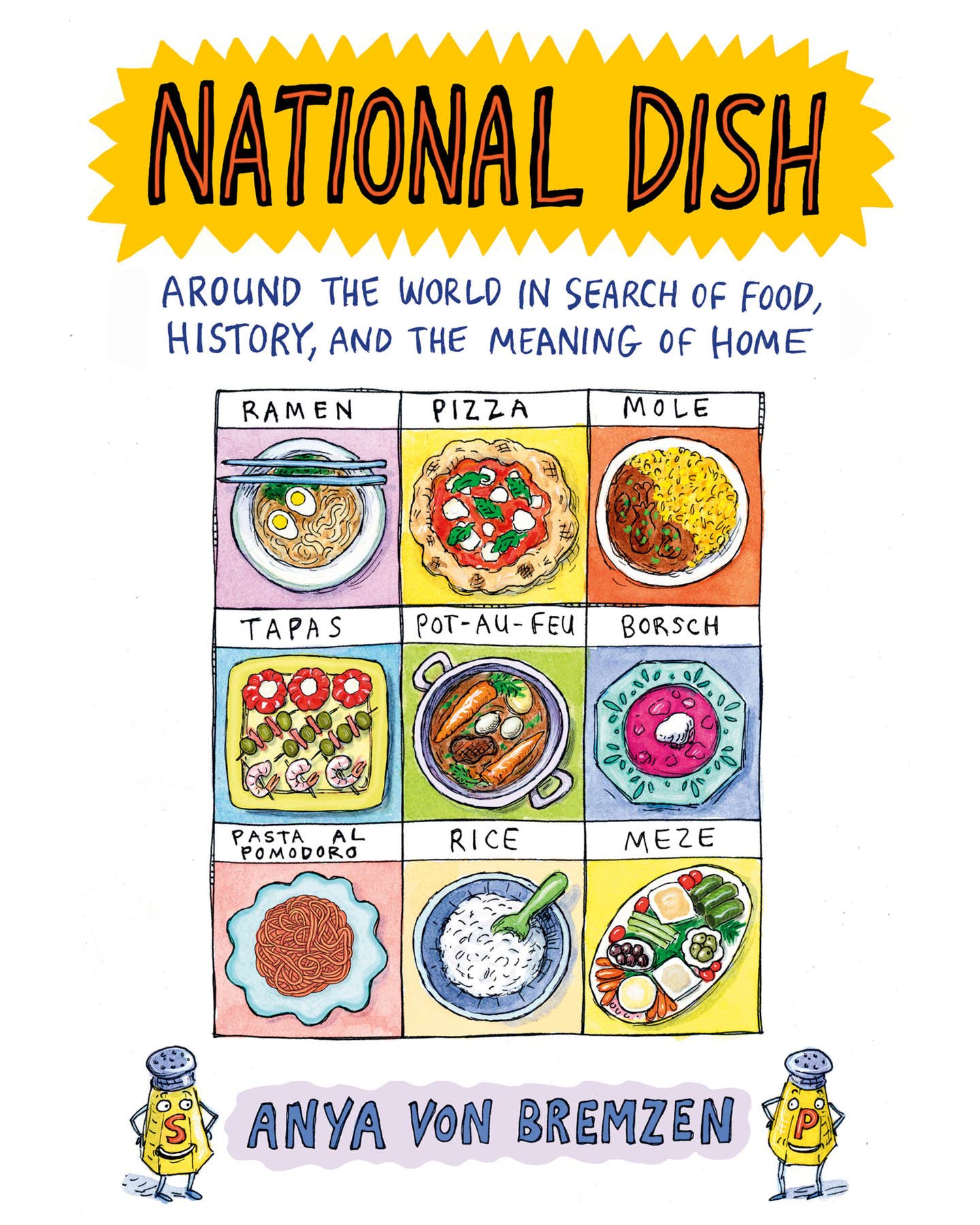
“Until the 1650s there wasn’t anything remotely like distinct, codified ‘national’ cooking, anywhere,” writes Anya von Bremzen in her new book, National Dish. Those are fighting words if, say, you're a chef specializing in “authentic” Japanese curry, an Italian American exalting the primordial Italian-ness of pizza, or a food writer (cough) publishing recipes for Thai this or French that.
On a whirlwind tour of six cities—there’s Parisian pot-au-feu in one chapter, pizza in Naples the next—Von Bremzen celebrates the colorful histories of canonical dishes like ramen, mole, and borshch. But she also picks at their accepted narratives like a scab: Was pizza Margherita truly invented in 1889 to honor the queen of Italy, as Wikipedia and umpteen scholars would have you believe? (Spoiler: It wasn’t.) Are mezzes really Turkish, considering there was no cookbook with the term “Turkish” in its title until the 1970s? (Probably, but it’s complicated.)
Answering these fraught questions, Von Bremzen’s prose is anything but academic—it's as bold and richly textured as a steaming bowl of shoyu ramen. In Oaxaca, kernels of maize “glimmer like multihued amber.” In Seville, tapas are “little road signs or historical plaques, couched in the language of the plate, marking the long epic national narratives of power and politics.”
Von Bremzen is no newcomer to the intersection of food and national identity. Born in the Soviet Union (more on that in her memoir, Mastering the Art of Soviet Cooking), she has written a potpourri of books, including Paladares: Recipes Inspired by the Private Restaurants of Cuba, Please to the Table: The Russian Cookbook, and The New Spanish Table.
National Dish reads like a lively, personal spin-off of those titles. It’s as if, after spending decades fact-checking culinary history for myriad articles and cookbooks, she finally reached her foodie "fakelore" quota and said, “That’s it, I’m calling BS.”
That frustration can be felt in the occasional rhetorical bomb—for instance, when Von Bremzen writes that many national dishes are “products of a late-capitalist cultural logic that treats identities, belonging, heritage, and origin myths as commodities subject to the rule of the marketplace.” But she’s equally quick to point out that although identities are social constructs, that fact doesn't make them any less real or important.
Last month, I gave Von Bremzen a ring at her apartment in Queens to get a window into how she grappled with some of these sticky subjects. Here are the highlights from our conversation.
BK: How did this book idea come about?
AVB: I guess it all started with the collapse of the Soviet Union. My first book, Please to the Table: The Russian Cookbook, was about all the different cuisines that belonged to an empire. And it came out right when [the USSR] was breaking up into many countries. I hate to say it now, but the book had a sort of imperial perspective, with “Russian” in the title. Later I did this book called Greatest Dishes: Around the World in 80 Recipes, which had me researching iconic foods like pizza, risotto, and mole—and that got me thinking, gee, there’s so much material here, but in a cookbook you can only do so much.
What is the best thing you ate while researching?
Pizza. Because who doesn’t love pizza, especially when Enzo Coccia is making it. Then there was pringá in Sevilla. It’s basically a full Andalusian cocido [meat stew], just distilled into a slider. You get four perfect bites that are the essence of Spanishness—the pimentón, the chorizo … all in a tapas-scale version. And in Mexico I loved all the different moles. Especially with the warm handmade tortillas made from heirloom maize. The way they puff on the comal. The toasty scent and earthy corn. Those tortillas—it’s like comparing mac and cheese from a box to something your Southern grandmother made.
Tell me more about those moles. What role does mole play in Mexican culture today?
It’s everywhere. In Mexico City, you have chefs like Enrique Olvera making borderline metaphysical moles that are aged for over a year and served at different stages of maturation. What’s interesting is that mole is colonial—it represents a mix, or mestizaje, of ingredients both Spanish and native Mexican. Now, down in Oaxaca, there’s a lot of attention being paid to “indigenous” moles that have almost no Spanish elements. So you have a multiplicity of moles, not one colonial hybrid dish.
The subtitle of National Dish is, “Around the world in search of food, history, and the meaning of home.” Did you find the meaning of home?
The book wasn’t about me, but it did make me reflect on my childhood in the USSR. Borshch, for example, represented home for me and for Russians in general, but when war broke out in Ukraine, borshch suddenly became political, with Ukraine rightly calling it theirs. I’m a ruthless cosmopolitan of sorts, so for me, “losing” borshch seemed justified. It was a way of decolonizing it from, and for, myself. Many other Russians wouldn’t agree with me, though. Home is an idea we carry inside us, but it can divide us, too.
What was the most surprising discovery you made?
For me it was this whole story about pizza Margherita—how the dish got its name from a queen who allowed a pizza to be named after her … The claim is repeated in every academic source, yet it turns out, it’s fakelore. So many of the “traditional” dishes I looked at are actually recent inventions. For instance, people think Japanese curries from Sapporo and Hokkaido and whatnot are old, but they didn’t exist before the 1980s.

Did researching this book change your view on cultural appropriation as it relates to food?
When we talk about cultural appropriation, we’re really talking about racial injustice and other power imbalances. I think it would be much more useful to talk about those issues directly. So, instead of “he appropriated my mofongo,” maybe it’s, “there is racial injustice in the food sector.” National identities change all the time. When most dishes were invented, current borders didn’t exist—so how can you really claim something is from Syria or Lebanon or Turkey when it was eaten under the Ottoman Empire? The philosopher Kwame Anthony Appiah says that when you treat culture like corporate property that belongs to someone, you’re not acknowledging the fluidity and complexity of cultural exchange. Nations do that with food. I wish every time we talked vaguely about cultural appropriation, there was a “donate” button, because ultimately only political action can effect change.
In the book, there’s constant tension between universality and propriety. That a dish like pizza can be eaten everywhere, with new iterations being created all the time, and yet many claim it’s from a specific place. How do you walk that tightrope?
After writing this book, I’m much more in the universalist camp. When you start reading about this stuff, you see how recent borders are, and how histories are appropriated and mythologized for the purpose of commercial and political interests. But regardless of the actual history of a dish, what’s more important is how people feel about it.
On that note, UNESCO recently said dolma, stuffed vegetables, were part of Azerbaijan’s cultural heritage. That didn’t sit well with Turkey and Armenia, countries that also lay claim to the dish. Are these international organizations perhaps hurting more than they’re helping?
When UNESCO gives dolma to Azerbaijan, they’re not saying the dish belongs to that culture; they’re saying they want to honor the dolma-making tradition of Azerbaijan. Of course, that’s not how it’s read. And because everything is about marketing and nation-building and place-branding, countries use these designations in promotional campaigns—not just abroad but at home as well. I think these organizations mean well, and their phrasing is ok, but it’s all very complicated.
One of the most fascinating passages was about cucina povera, and how we get it all wrong.
Yes. There’s this whole myth that peasant cuisine was wholesome and wonderful, but when we look at what people actually ate in Italy or France, for example, we find horror stories of scarcity, hunger, and bleak gruels. Sure, our ancestors ate more healthy whole grains, but they definitely wanted the white rice. We poo-poo white bread and industrial food now, but when they became accessible to the masses, imagine what a revolution that was.
I was struck by the fact that American perceptions of certain food cultures often don’t jibe with reality. You mention that sake accounts for six percent of booze consumed in Japan. Beer is Spain’s alcohol of choice by a landslide, not wine. Where does this disconnect come from?
It’s natural to orientalize cultures, to imbue them with the essentialist qualities we want to see in them. When you go to Turkey, you want to see Turks eating Turkish food. So when you realize Japan has some of the best French, Italian, and hybrid food you can imagine, it’s hard to check the “authenticity” box. That’s where the cultural appropriation question comes in: What do you do when a country like Japan wants people around the world to appropriate its food? At the same time the world was falling in love with sushi, Japanese people were turning away from their traditional diet. Ironically, the success of Japanese food abroad encouraged Japanese diners and chefs to rediscover authentic local cuisines.
What do you hope readers come away with?
I want people to understand that identity is transactional, complicated, and really important, and that food is a part of that. I hope readers will be skeptical of essentialist stories and canned bits. To recognize that food histories are dynamic and open-ended.
Keep Reading
Continue to Next Story
